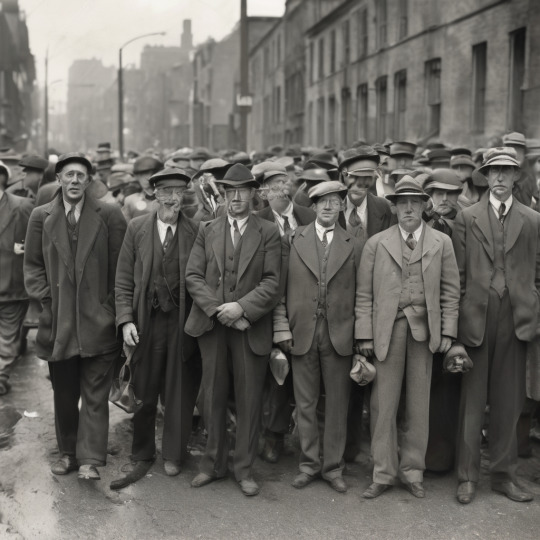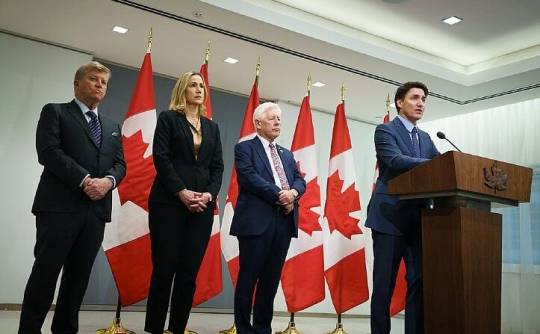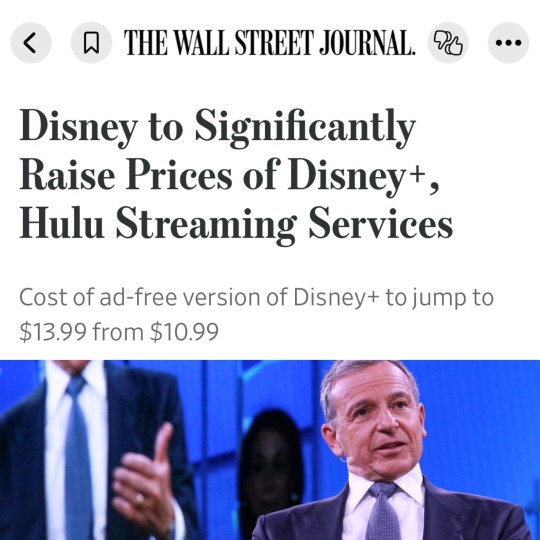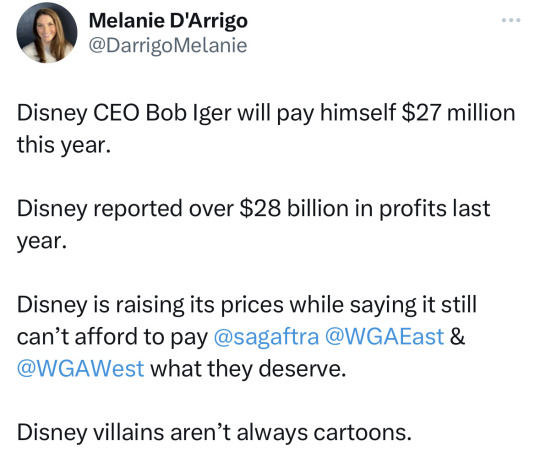#LaborUnions
Explore tagged Tumblr posts
Text
Ulsel
System: Argyle
ID: ARGB4
Equatorial Diameter: 16209km
Mass: 1.33*10^25kg
Orbital Period: 9.09ED
Rotation Period: 6.06ED
Solar Day: 18.18ED
Gravity: 1.38G
Atmospheric Pressure: 961atm
Avg. Temperature: 661C
Inhabited Moons: 0
Despite being four bodies away from the Argyle B star, Ulsel is by far the hottest planet in the Argyle B subsystem. This heat is used to the advantage of mining towns on the surface, as frozen iron deposits can be extracted in a raw liquid form. This liquid is shipped out direct to refineries on Sorek, as domestic industry is rendered impossible by the heat. Living among this heat is confined to very specific company designated locations. The extreme nature of the climate has made this planet a capitalist haven from regulations - at the expense of the freeze miners they employ. Because of this, it has also become a major focus for labor unions across the bay, and strikes sometimes end in violence. The company towns, mostly owned by subsidiaries of 3CEC, range in extent from normal towns to totalitarian capitalist regimes in total reverence to the company. Sociology majors love writing their final thesis on this planet.

The scorching surface of Ulsel allows frozen iron to melt naturally, making it much easier to extract.
2 notes
·
View notes
Text
The Decline of Welfare Capitalism and the Rise of Collective Bargaining in HRM (1930-1940)

The Great Depression of the 1930s not only brought about significant economic challenges but also marked a critical turning point for Human Resource Management (HRM) in the United States and other industrialized nations. While the early 20th century saw the rise of welfare capitalism, which emphasized company-provided benefits and non-union personnel management programs, the 1930s dismantled many of these initiatives. The period revealed the limitations of HRM’s welfare-oriented practices and shifted the balance of power toward labor unions and collective bargaining as the preferred method of employment relations.
This essay explores the decline of welfare capitalism, the weakening of HRM's strategic influence, and the growing dominance of collective bargaining during the 1930s. It will examine the ways in which HRM lost prestige and power, and how labor unions filled the vacuum left by weakened corporate labor programs. The shift from cooperative employer-employee relations to adversarial labor-management negotiations fundamentally altered the trajectory of HRM during this period, leaving lasting effects on the field for decades to come.
The Fall of Welfare Capitalism
Welfare capitalism, a popular model in the 1920s, was based on the idea that companies could prevent labor unrest and improve employee loyalty through the provision of benefits and welfare programs. Employers offered health insurance, pensions, company housing, and recreational facilities, all in an effort to create a cooperative and loyal workforce. However, this model relied heavily on the profitability of companies, and when the Great Depression hit in 1929, the financial foundation of welfare capitalism crumbled.
As businesses faced severe financial strain, the expensive welfare programs that had defined HRM in the 1920s became unsustainable. Smaller and less profitable companies were the first to cut wages, lay off employees, and disband their welfare programs. Larger and more progressive companies initially resisted these changes, but the pressures of competition and bankruptcy eventually forced them to follow suit. By the mid-1930s, even the vanguard of welfare capitalist companies had begun to liquidate their labor programs, resulting in a complete collapse of this HRM model.
The abandonment of welfare capitalism had profound effects on employee relations. Companies that had once invested heavily in employee goodwill through welfare programs were now more concerned with survival than maintaining these initiatives. This led to widespread worker disillusionment, as the promises of corporate paternalism faded in the face of economic necessity. HRM, which had been closely associated with welfare capitalism, lost much of its credibility as it failed to protect workers from the harsh realities of the Depression.
HRM’s Loss of Prestige and Strategic Influence
The collapse of welfare capitalism also diminished the role and prestige of HRM within organizations. During the 1920s, HRM had been seen as an important function that contributed to both employee well-being and organizational efficiency. However, the economic crisis of the 1930s eroded this perception, as HRM’s ability to manage labor relations and maintain workforce morale was called into question.
One of the most damaging effects of the Depression on HRM was its loss of strategic influence. Prior to the 1930s, HR managers often played a significant role in shaping company policy and aligning employee interests with corporate goals. However, as the financial pressures of the Depression mounted, HRM was relegated to a more administrative and tactical function. Companies became more focused on cost-cutting and survival than on long-term strategic planning, and HRM's role was reduced to managing layoffs, wage cuts, and other short-term measures.
This shift was particularly evident in the diminished role of HRM in collective decision-making. In the pre-Depression era, HRM had been part of a broader unitarist vision of employee-employer cooperation, where both sides worked together for mutual gain. However, as the Depression deepened, this cooperative approach was replaced by a more adversarial model of labor relations. The focus shifted from collaboration to conflict, with unions increasingly viewed as the primary agents for negotiating wages and working conditions.
The Rise of Collective Bargaining
As HRM’s influence waned, labor unions gained strength and prominence. The economic hardships of the 1930s led to widespread labor unrest, with workers organizing strikes and demanding better wages and working conditions. The Roosevelt administration’s New Deal policies, particularly the National Labor Relations Act (NLRA) of 1935, provided legal protections for unions and encouraged collective bargaining as the preferred method of resolving labor disputes.
Collective bargaining quickly became the dominant model for governing employment relations. Under this system, labor unions represented workers in negotiations with management over wages, benefits, and working conditions. This adversarial approach to labor relations stood in stark contrast to the cooperative ideals of welfare capitalism, which had sought to align the interests of employees and employers. Instead of collaboration, collective bargaining emphasized a balance of power between labor and management, with each side pursuing its own interests through negotiation.
The shift toward collective bargaining fundamentally changed the role of HRM in organizations. HR departments were now tasked with administering collective bargaining agreements and managing labor disputes, rather than shaping strategic policies or fostering employee cooperation. This new reality diminished the strategic component of HRM and reinforced its role as an administrative function focused on compliance with union contracts.
The Changing Public Perception of HRM
As the collective bargaining model gained traction, HRM faced a growing perception problem. In the 1920s, HRM had been associated with progressive labor practices and the promotion of employee welfare. However, by the late 1930s, HRM was increasingly viewed with suspicion by both workers and the public. Many saw HRM as a set of techniques designed to manipulate workers and undermine unions, rather than a legitimate function for improving labor relations.
This negative perception was compounded by HRM’s association with union avoidance strategies. As unions became more powerful, some companies turned to HR departments to develop tactics for reducing union influence or preventing unionization altogether. These tactics, which included offering limited benefits to discourage union membership or using propaganda to dissuade workers from organizing, further eroded trust in HRM. Workers came to see HRM as a tool for management to maintain control, rather than an advocate for their interests.
Conclusion
The 1930s marked a pivotal period in the history of HRM, as the Great Depression dismantled the welfare capitalist model and ushered in an era of collective bargaining. HRM’s role and influence were significantly diminished during this time, as the focus shifted from employee welfare to cost-cutting and labor control. The rise of labor unions and the adoption of collective bargaining as the preferred method of labor relations further marginalized HRM, reducing its strategic importance and tarnishing its public image. This period of decline set the stage for the later resurgence of HRM, but it also left a lasting legacy of suspicion and mistrust between workers and HR departments.
#TheGreatDepression#HRM (Human Resource Management)#1930s#WelfareCapitalism#LaborUnions#CollectiveBargaining#EmploymentRelations#IndustrializedNations#UnitedStates#EconomicChallenges#TurningPoint#HRMHistory#LaborMovement#UnionizationTurningPoint#PersonnelManagement#CompanyBenefits#LimitationsOfWelfareOrientedPractices#ShiftInPowerBalance
1 note
·
View note
Text
0 notes
Text
youtube
#KarnatakaGovernment#14HourWorkday#PrivateCompanies#LaborLaws#WorkerRights#EconomicImpact#PoliticalControversy#HealthEffects#WomenEmployment#NightShifts#IndustrialGrowth#ForeignInvestment#LaborUnions#WorkLifeBalance#FactoryWorkers#LegislativeAssembly#EconomicDevelopment#EmploymentOpportunities#WorkerSafety#LaborRights#NewBill#KarnatakaNews#CurrentAffairs#BusinessNews#IndustryUpdate#WorkerWelfare#LongWorkingHours#OvertimePolicy#WorkEnvironment#Youtube
0 notes
Text
Trudeau's Successful U.S. Visit Enhances Ties

Prime Minister Justin Trudeau recently wrapped up a successful visit to Philadelphia, Pennsylvania, marking a significant step forward in strengthening Canada-U.S. relations. During his visit, Trudeau engaged in pivotal discussions on cross-border trade, labor union collaborations, and advancements in AI governance.
Strengthening Canada-U.S. Relations
Trudeau’s visit to the United States was an integral part of Team Canada’s ongoing efforts to deepen ties with their southern neighbor. The Prime Minister participated in the Service Employees International Union (SEIU) Quadrennial North American Convention, delivering a speech that underscored the robust partnership between Canada and the U.S. He highlighted the vital role labor unions play in defending workers’ rights and fostering economic stability on both sides of the border. Collaborative Efforts with U.S. Leaders During the convention, Trudeau joined U.S. Vice-President Kamala Harris in discussions with union representatives. This meeting underscored the importance of organized labor in supporting middle-class jobs and creating dynamic economies. The dialogue between the leaders focused on ways to enhance the Canada-U.S. relationship, particularly in areas like increasing trade, scaling up cross-border supply chains, and supporting manufacturing sectors.
Meeting with Pennsylvania's Governor
Trudeau also met with Pennsylvania Governor Josh Shapiro to discuss the significant Canada-Pennsylvania relationship. Pennsylvania, home to many Canadians, enjoys substantial economic ties with Canada, including US$13.6 billion in annual exports to the state. The discussions emphasized the mutual benefits of this relationship, particularly in terms of job creation and economic growth. AI Leadership and the Seoul Summit Prime Minister Trudeau's visit also featured his participation in the AI Seoul Summit, where he joined global leaders virtually to discuss AI governance. At the summit, Trudeau highlighted Canada’s leadership in artificial intelligence, reinforced by a $2.4 billion investment package announced in Budget 2024. This package includes funding for the creation of a Canadian AI Safety Institute, aiming to advance the safe development and deployment of AI technologies. Comments Justin Trudeau, Prime Minister of Canada said, ��Canada and the U.S. have the world’s most successful partnership. Team Canada is working with our American partners to deepen these ties, grow our economies, keep our air clean, create good-paying jobs, and build a better, fairer future. Together, we’re putting our people on both sides of the border at the forefront of opportunity.” François-Philippe Champagne, Minister of Innovation, Science and Industry said, “Canada continues to play a leading role on the global governance and responsible use of AI." "From our role championing the creation of the Global Partnership on AI (GPAI), to pioneering a national AI strategy, to being among the first to propose a legislative framework to regulate AI, we will continue engaging with the global community to shape the international discourse to build trust around this transformational technology.” Key Announcements and Initiatives At the AI Seoul Summit, Trudeau signed the Seoul Declaration for Safe, Innovative, and Inclusive AI, which will guide global AI safety efforts. The Canadian government's commitment to AI was further showcased through various investments aimed at bolstering the country’s AI ecosystem. These initiatives are set to enhance Canada's position as a leader in AI governance and innovation.
The Importance of Canada-U.S. Economic Partnership
Canada and the U.S. share one of the world’s largest trading relationships, which supports millions of jobs in both countries. Moreover, with over $1.3 trillion in bilateral trade in goods and services in 2023, the economic partnership between these two nations is a cornerstone of their economic stability and growth. Additionally, this relationship is built on longstanding binational supply chains, with a significant portion of Canadian exports being integrated into U.S. supply chains. To Conclude Prime Minister Trudeau’s visit to the United States was a resounding success, reinforcing the deep and multifaceted relationship between Canada and the U.S. Furthermore, through his engagements with labor unions, U.S. leaders, and AI experts, Trudeau emphasized the importance of collaboration and innovation. This visit not only strengthened economic ties but also set the stage for future cooperation in key areas like trade, labor rights, and AI governance. As Canada continues to champion these initiatives, the partnership with the U.S. will undoubtedly flourish, benefiting citizens on both sides of the border. Sources: THX News & The Canadian Government. Read the full article
#AIGovernance#AISeoulSummit#Canada-U.S.relations#CanadianAIleadership#cross-bordertrade#KamalaHarrismeeting#laborunions#PennsylvaniaGovernor#SEIUconvention#thxnews
0 notes
Text
Corporate dregs will never acknowledge the value of labor over the leaches in executive management. If they do, then they'll have to share the wealth with labor and give up some of their astronomical compensation.
Greedy corporations and their selfish executives are ruining everything.
I for one will never spend money on anything owned by Deplorable Disney.

Source

Source
9K notes
·
View notes
Text
UPS and Teamsters Reach Deal: Workers Reinstated with Back Pay and Benefits #automationtechnology #backpay #benefits #businessmodelchange #collectivebargaining #competition #costcuttingmeasures #employeerights #FedEx #InternationalBrotherhoodofTeamsters #laborunions #layoffs #packagedeliveryindustry #reinstatement #UPS #workerinterests
#Business#automationtechnology#backpay#benefits#businessmodelchange#collectivebargaining#competition#costcuttingmeasures#employeerights#FedEx#InternationalBrotherhoodofTeamsters#laborunions#layoffs#packagedeliveryindustry#reinstatement#UPS#workerinterests
0 notes
Text
Supreme Court Battle: Professors Fight Anti-Semitic Union's Hate Speech #antiSemiticteachersunion #CivilRightsAct #discrimination #employmentdiscriminationlaws #hatespeech #Jewishprofessors #laborunions #supremecourt #TitleVII #workplacediscrimination
#Politics#antiSemiticteachersunion#CivilRightsAct#discrimination#employmentdiscriminationlaws#hatespeech#Jewishprofessors#laborunions#supremecourt#TitleVII#workplacediscrimination
0 notes
Text
NLC and TUC Call Off Nationwide Strike; Workers to Return to Work

On Wednesday night, the National Executive Council (NEC) of the Nigeria Labour Congress (NLC) and Trade Union Congress (TUC) jointly decided to suspend the ongoing nationwide industrial action. This decision came after a meeting that commenced a few minutes past 7 p.m. and lasted about an hour, with the intervention of the National Security Adviser (NSA), Nuhu Ribadu.ALSO READ: Interesting storiesReports from Punch indicate that the meeting involved a thorough review by various affiliates and state chapters of the outcomes of discussions held between labor leaders and Ribadu. Subsequently, the decision was reached to halt the nationwide strike, which had been initiated in response to the recent assault on the President of the NLC, Joe Ajaero, in Imo State. LEARN MORE… Read the full article
#agreement#backtowork#CollectiveBargaining#compromise#consensus#EmployeeRights#IndustrialAction#LaborDispute#laborrelations#laborunions#nationwidestrike#Negotiations#NLC#resolution#returntowork#settlement#strikecalledoff#TUC#WorkStoppage#Workers
0 notes
Text
youtube
Labor Day
#HYWIN#LaborDay#WorkersRights#LaborUnions#Workforce#LaborDayWeekend#HardWorkPaysOff#CelebrateLabor#LaborHistory#LaborDayParade#LaborDaySale#AmericanWorkers#LaborDay2023#HonoringLabor#LaborMovement#UnionStrong#LaborRights#LaborDayParty#LaborDayBBQ#LaborDayFun#WorkHardPlayHard#LaborDayOff#LaborDayWeek#LaborDayPicnic#LaborDayTradition#LaborDayCelebration#LaborDayCookout#LaborDayFamily#LaborDayFestivities#LaborDayGathering
0 notes
Text
NEW YUGOSLOV LAW ON SOCIAL SECURITY FOR BLUE- AND WHITE-COLLAR WORKERS AND THEIR FAMILIES
Summary
The article begins by discussing the shortcomings of the former Yugoslav law on social security. The law was not uniform, did not include all workers, and the right to a pension was closely connected with length of employment. This meant that workers who were not insured before the war were at a disadvantage. Additionally, the centralized structure of social security was too inflexible.
The new law on social security addresses these shortcomings. It will extend social security to all workers, including civil service employees. Social security will be financed by the state without contributions from workers. The right to and extent of social security will depend on the length of employment, the salary, and the difficulty of the work. Labor unions will have the right to participate in the management of social security and to exercise supervision over the rights of the insured and the work of the social security agencies.
The article also provides some statistics on social security payments in Yugoslavia in the years 1939, 1946, 1947, 1948, and 1949. In 1939, 878,440 workers were insured. By 1949, the number of insured workers had increased to 1,400,000. The total amount of social security payments in 1939 was 394,952,000 dinars. By 1949, the total amount of social security payments had increased to 1,323,580,381.80 dinars.
The article concludes by stating that the new law on social security is a significant improvement over the previous law. It will provide more comprehensive coverage for workers and their families, and it will be financed by the state rather than by workers. This will make social security more accessible to all workers, regardless of their income.
In addition to the above, here are some other key points from the article:
The new law will be implemented gradually.
The agencies of the state administration will administer social security, but certain benefits will be transferred for administration to other state, cooperative, and associated enterprises and establishments.
Social security will be under the general management of the Committee for Social Welfare of the Federal Government.
Overall, the new law on social security in Yugoslavia is a positive development. It will provide much-needed benefits to workers and their families, and it will make social security more accessible to all.
#socialsecurity#yugoslavia#laborunions#pensions#benefits#insurance#workersrights#socialwelfare#government#reform#such as:#newlaw#financedbystate#righttoandextentofsocialsecurity#laborunionsparticipation#administrationofsocialsecurity
0 notes
Text
#labourstudies#workforcedevelopment#workerrights#laborunions#socialjustice#equity#inclusion#fairwages#workersafety#changetheworld
1 note
·
View note
Text
Trotskyism: Counter-revolution in Disguise, Ch. 12: The Trotskyites in the USA (1935) by M. J. Olgin. Marxist Audiobook.
youtube
#marxism#trotsky#trotskyism#marxismleninism#socialism#communism#ussr#sovietunion#socialist#communist#youtube#marxist#politics#labor#labormovement#laborstrike#laborunion#Youtube
10 notes
·
View notes
Text
Boeing Lays Off 438 Labor Union Members Amid Broader Workforce Reductions.
Boeing Lays Off 438 Labor Union Members Amid Broader Workforce Reductions. SEATTLE, WA – Boeing has issued layoff notices to 438 members of the Society of Professional Engineering Employees in Aerospace (SPEEA) as part of a broader effort to reduce its global workforce by 10%. The layoffs, which affect both professional and technical workers, are part of a company-wide reduction that will see…
0 notes
Video
youtube
Worker Unions Will Be Ended If Donald Trump Wins The Election!
#youtube#DonaldTrump2024 LaborUnions WorkersRights UnionBusting TrumpVsUnions TrumpPolicies FutureOfUnions Election2024 EndOfUnions CorporatePower Po#Donald Trump 2024 Trump election 2024 labor unions worker unions union busting Trump anti-union policies future of labor unions workers' rig
0 notes
Text
News from southern Africa, 10 July
The 2023 Paris World Para Athletics Championships have begun, with over 1,300 athletes from 107 nations competing in 168 medal events. IPC President Anderson Pierson has encouraged athletes to break world records during the competition.
This edition of the championships is significant as it marks the 10th anniversary of the event.
A group of nine Namibian athletes with disabilities left Namibia on 4 July to attend the championships in Paris.
2. South Africa's largest labor union, COSATU, has been staging protests demanding interest rate cuts, electricity reforms, and job additions due to the country's economic challenges, including rolling blackouts, high unemployment, and soaring costs of living.
3. The U.S.-Africa Business Summit, organized by the Corporate Council on Africa (CCA) and the Government of Botswana, will take place in Gaborone from July 11-14.
Over 1,000 participants are expected to attend, including government and private sector leaders from Africa and the United States.
The summit will focus on "enhancing Africa's value chains" and will explore opportunities for collaboration and investment in various sectors, including mining, agribusiness, and health.
The African Continental Free Trade Area (AfCFTA) will also be a key topic of discussion, with the aim of increasing Africa's role in global value chains and boosting trade within the continent.
The success of the summit will be measured by the level of participation from countries, multilateral institutions, and private sector executives, as well as the ability to raise resources through sponsorships and registrations.
#ParaAthletics#WorldChampionships#RecordBreakers#Athletes#Namibia#SportsNews#SouthAfricaProtests#EconomicWoes#LaborUnion#USAfricaBizSummit#InvestmentOpportunities#Trade#AfCFTA#ValueChains#Collaboration#Gaborone#Botswana
0 notes